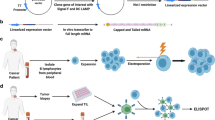Abstract
In a previous report we described how cross-immunizations of pairs of transgenic mice expressing different HLA class I antigens led to the production of antibodies directed exclusively at polymorphic epitopes. This was ascribed to self-tolerance of HLA that prevents immune responses to monomorphic epitopes and focuses responses on polymorphic ones. In the present report we extend our findings and demonstrate that immunizations of class I transgenic mice with HLA transfected mouse fibrosarcoma as well as with human lymphoblastoid cells also preferentially yield antibodies to polymorphic epitopes. This was the case whether or not immunizations were carried out across locus barriers [e.g., Tg (HLA-A *0201) or Tg (HLA-Cw*0301) transgenic mice immunized with HLA-B27 transfectants] or within the same locus [e.g., Tg (HLA-B*1302) transgenic mice immunized with HLA-B27 transfectants or B27-expressing lympho-blastoid cell]. Use of an extended immunization protocol with four or more booster injections favored antibodies of IgG isotype with affinities high enough to lyse normal peripheral blood lymphocytes (PBLs) in complement-dependent cytotoxicity assays and to immunoprecipitate HLA antigens. The specificities covered by the monoclonal antibodies (mAbs) could be either broad or narrow, depending on the genetic distance of the HLA antigens or alleles involved. For instance, a Tg(HLA-B*1302) transgenic mouse immunized with B27 produced both broad B7/B27-specific antibodies, Bw4-specific antibodies, and one antibody reacting with all B alleles except B13 and with some C alleles. On the other hand, a Tg(HLA-B*1302) transgenic mouse immunized with Bw47 transfectants responded narrowly with an antibody to Bw60 and Bw47. Thus it appears that by choosing appropriate recipient mice and closely related or more distant HLA antigens, antibodies of a programmed specificity can be generated.
Similar content being viewed by others
References
Arnaiz-Villena, A., Belvedere, M., Decary, F., Fotino, M., Heise, E., Hogan, V., Martinetti, M., Muller, C., Richiardi, P., Vicario, J. L., Barbanti, M., Bruyere, J., Caruso, C., Conighi, C., Gelsthorpe, K., Hammond, M., Lopez-Larrea, C., Mervart, H., Peruccio, D., Regueiro, J. R., and Schreuder, I.: Antigen Society # 15 report (Bw4 and Bw6). In B. Dupont (ed.): Immunology of HLA, pp. 214–217, Springer, New York, 1989
Bodmer, J. G., Marsh, S. G. E., Parham, P., Erlich, H. A., Albert, E., Bodmer, W. F., Dupont, B., Mach, B., Mayr, W. R., Sasazuki, T., Schreuder, G. M. Th., Strominger, J. L., Svejgaard, A., and Terasaki, P. I.: Nomenclature for factors of the HLA system, 1989. Tissue Antigens 35: 1–8, 1990
Dill, O., Kievits, F., Koch, S., Ivanyi, P., and Hämmerling, G. J.: Immunological function of HLA-C antigens in HLA-Cw3 transgenic mice. Proc Natl Acad Sci USA 85: 5664–5668, 1988
Felgner, P. L., Gadek, T. R., Holm, M., Roman, R., Chan, H. W., Wenz, M., Northrop, J. P., Ringold, G. M., and Danielson, M.: Lipofection: a highly efficient, lipid-mediated DNA-transfection procedure. Proc Natl Acad Sci USA 84: 7413–7417, 1987
Hämmerling, G. J., Chamberlain, J. W., Dill, O., Yang, S. Y., Dupont, B., Khan, R., Chua, R., Weissman, S., and Hämmerling, U.: Self-tolerance to HLA focuses the response of immunized HLA-transgenic mice on production of antibody to precise polymorphic HLA alloantigens. Proc Natl Acad Sci USA 89: 235–239, 1990
Köhler, G. and Milstein, C.: Continuous cultures of fused cells secreting antibody of predefined specificity. Nature 256: 495–497, 1975
Le, A. X., Bernhard, E. J., Holterman, M. J., Strub, S., Parham, P., Lacy, E., and Engelhard, V. H.: Cytotoxic T cell responses in HLA-A2.1 transgenic mice. J Immunol 142: 1366–1371, 1989
Marsh, S. G. E. and Bodmer, J. G.: HLA-DRB nucleotide sequences, 1990. Immunogenetics 31: 141–144, 1990
Parham, P., Lomen, C. E., Lawlor, D. A., Ways, J. P., Holmes, N., Coppia, H. L., Salter, R. D., Wan, A. M., and Ennis, P. O.: The nature of polymorphism in HLA-A, B, C molecules. Proc Natl Acad Sci USA 85: 4005–4009, 1988
Tibensky, D., DeMars, R., Holowachuk, E. W., and Delovitch, T. L.: Sequence and gene transfer analyses of HLA-CwBL18 (HLA-C blank) and HLA-Cw5 genes. J Immunol 143: 348–355, 1989
Wigler, M., Pellicer, A., Silverstein, S., Axel, R., Urlaub, G., and Chasin, L.: DNA-mediated transfer of adenine phosphoribosyl-transferase locus into mammalian cells. Proc Natl Acad Sci USA 76: 1373–1376, 1979
Yang, S. Y., Milford, E., Hämmerling, U., and Dupont, B.: Description of the reference panel of B lymphoblastoid cell lines for factors of the HLA system: the B cell line panel designed for the Tenth International Histocompatibility Workshop. In B. Dupont (ed.): Immunology of HLA, pp. 11–19, Springer, New York, 1989
Author information
Authors and Affiliations
Additional information
Address correspondence and offprint requests to: U. Hämmerling.
Rights and permissions
About this article
Cite this article
Tahara, T., Yang, S.Y., Khan, R. et al. HLA antibody responses in HLA class I transgenic mice. Immunogenetics 32, 351–360 (1990). https://doi.org/10.1007/BF00211650
Received:
Issue Date:
DOI: https://doi.org/10.1007/BF00211650




